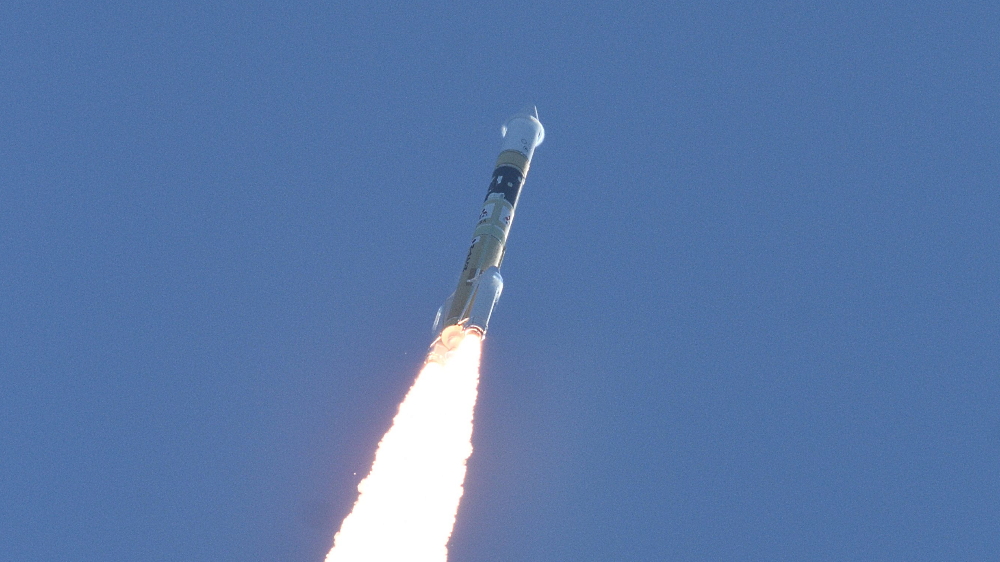
Launch of the UAE "Hope" probe, photo by MHI Launch Services
Al-Amal
After two transfers, the “Al-Amal” (“Hope”) of the United Arab Emirates finally took off. The original launch date was July 15 at 2:21 am IST (July 14 at 11:51 pm Moscow time), but the weather prevented. The launch was postponed to 02:43 GST on July 17 (23:43 Moscow time on July 16), but the instability of the weather did not go away - thunderstorms and clouds over the Tanegashima Space Center forced to announce another transfer. For the H-IIA launch vehicle, the launch is possible if the wind does not exceed 20.9 m / s, precipitation is not higher than 8 mm / h, and there are no thunderclouds and atmospheric discharges on the flight path. The new launch date was July 20, 01:58:14 GST (00:58 July 20 Moscow time), and this time the launch was successful. The device is brought to the calculated flight trajectory, and communication is established with the ground control center.

Hope probe, image from the Mohammed bin Rashid Space Center (MBRSC)
This device became the first for the United Arab Emirates to leave near-earth orbit, and if successful, the UAE space agency will become the fifth that managed to send an interplanetary station to Mars (after the Soviet, American, European and Indian). At the same time, the first independently built satellite, KhalifaSat, went on a flight quite recently, in 2018. The UAE, which announced a Mars mission in 2014 with great fanfare, attracted the help of more experienced colleagues, and it is known about partnerships with three American universities that have experience in creating interplanetary stations. The mission was planned to be quickly implemented, simple and relatively cheap, its cost is estimated at $ 200 million. By comparison, large strategic NASA missions typically cost over a billion. Six years from the announcement to the aircraft ready for launch is really a short time,and then the UAE can be congratulated.
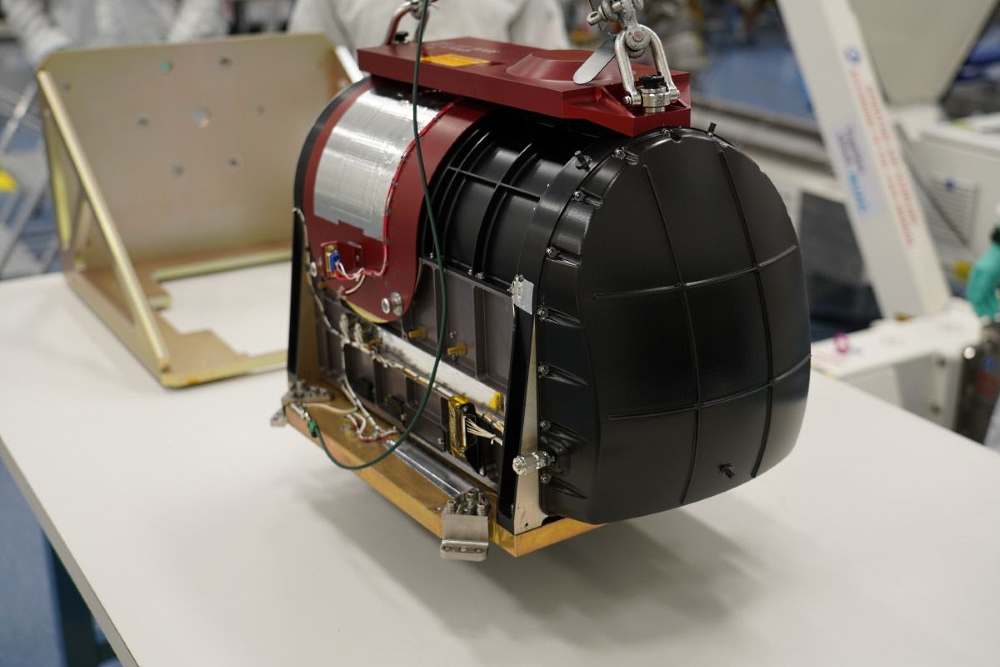
Infrared spectrometer, photo MBRSC
Al-Amal weighs about 1350 kg and carries three scientific instruments - a camera operating in the visible and ultraviolet ranges, and two spectrometers, ultraviolet and infrared. A special feature of the probe will be a unique orbit - above the equator with a minimum height of 20 thousand km and a maximum height of 43 thousand. Because of this, one should not expect detailed photographs, a 12-megapixel camera will shoot at a resolution of 8 km per pixel, but an orbit period of 55 hours will make it possible to observe weather changes during the Martian day. Because of this, "Hope" is called the first full-fledged meteorological satellite of Mars.
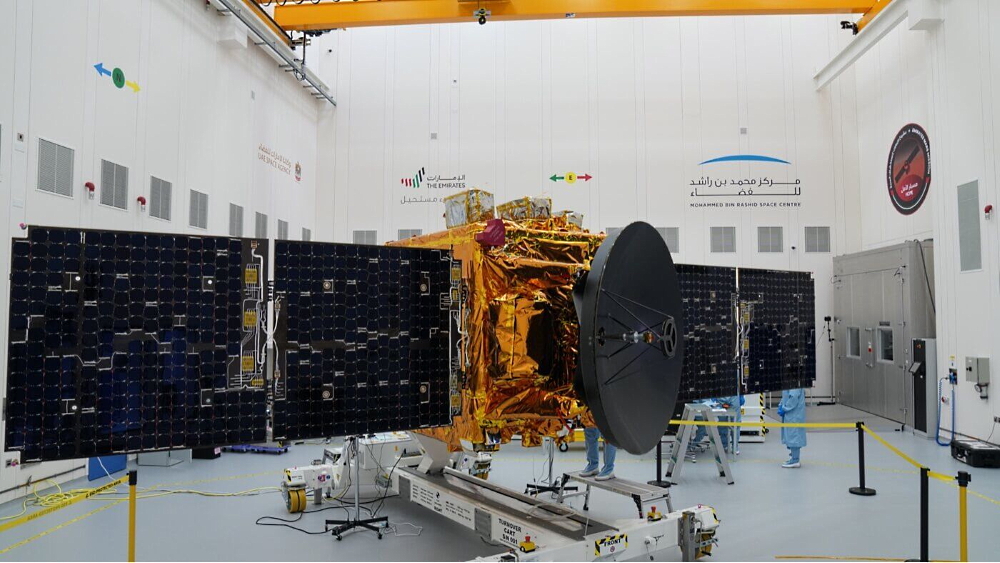
Probe "Hope" in the assembly and testing complex, photo MBRSC
Arrival of "Al-Amal" to Mars is expected in February 2021.
Tianwen-1
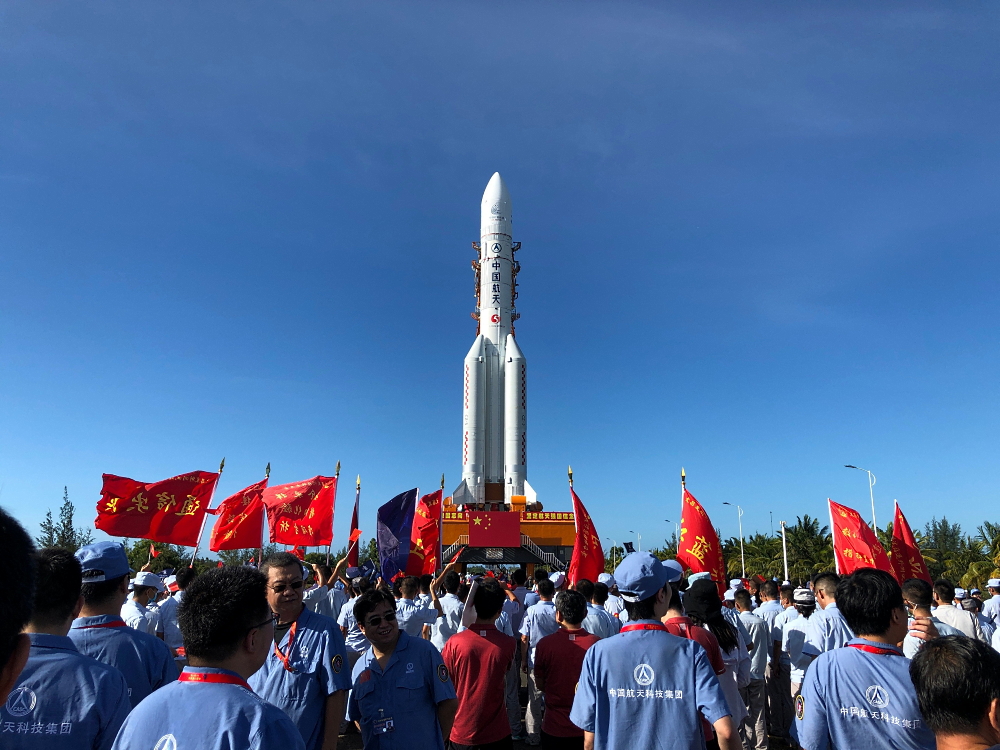
Rocket "Long March-5" for "Tianven-1" at the Wenchang cosmodrome
The next to go to Mars is the Chinese spacecraft "Tianwen-1" ("Questions to the sky"), named after the work of the great Chinese poet Tsai Yuan. Subsequent missions to Mars will receive a similar name with an increasing number. In January of this year, for the first time for the Chinese space program, the month of launch was announced, July, and now the date is also known - the 23rd.

Tianwen 1, still from CCTV video
The Chinese interplanetary station is almost four times heavier than Nadezhda, the total mass is in the region of 5 tons, but it can also be much more. First of all, these are two vehicles: an orbital with a mass of 3 tons and a Mars rover with a weight of 240 kg. Scientific equipment is also much more serious. The orbiter has a high-resolution camera, the capabilities of which are said to be comparable to the HiRISE of the Mars Reconnaisance Orbiter probe, which is complemented by a medium-resolution camera. Also on board is a mineral spectrometer, a subsurface radar, a magnetometer and an ion and neutral particle analyzer.
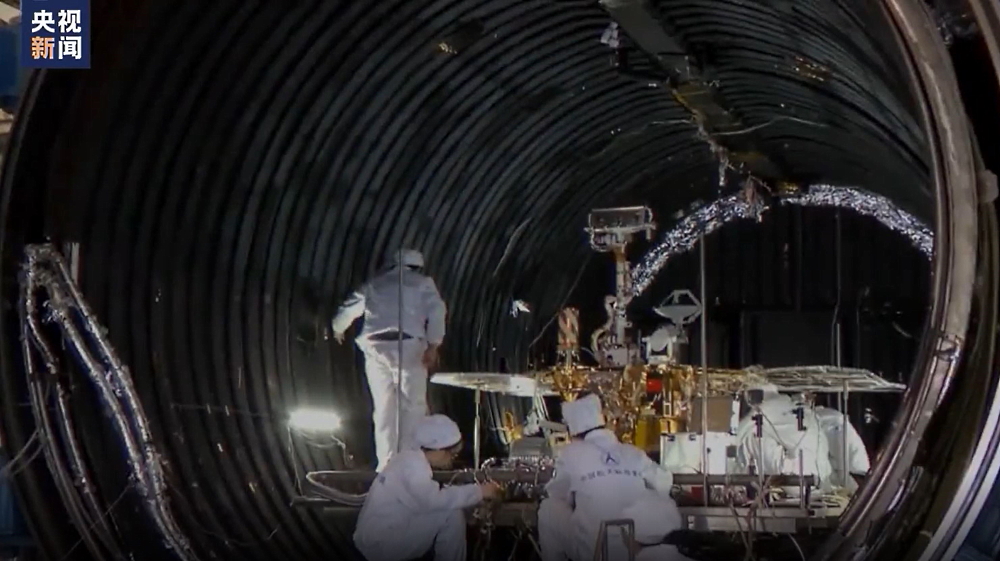
Mars rover, still from CCTV video
The rover's mass is almost twice as heavy as the Chinese lunar rovers Yuytu and four times lighter than Curiosity, which landed on Mars in the summer of 2012. And in terms of the number of instruments, it is closer to its “older brothers” - on board a georadar capable of seeing to a depth of 100 m, a surface magnetic field detector, a weather station, a surface compound detector and two cameras - multispectral and navigation.
For Tianwen-1, the launch window has been announced from July 23 to August 5, and so far no information has been received about the transfers to the public.
"Persistence"
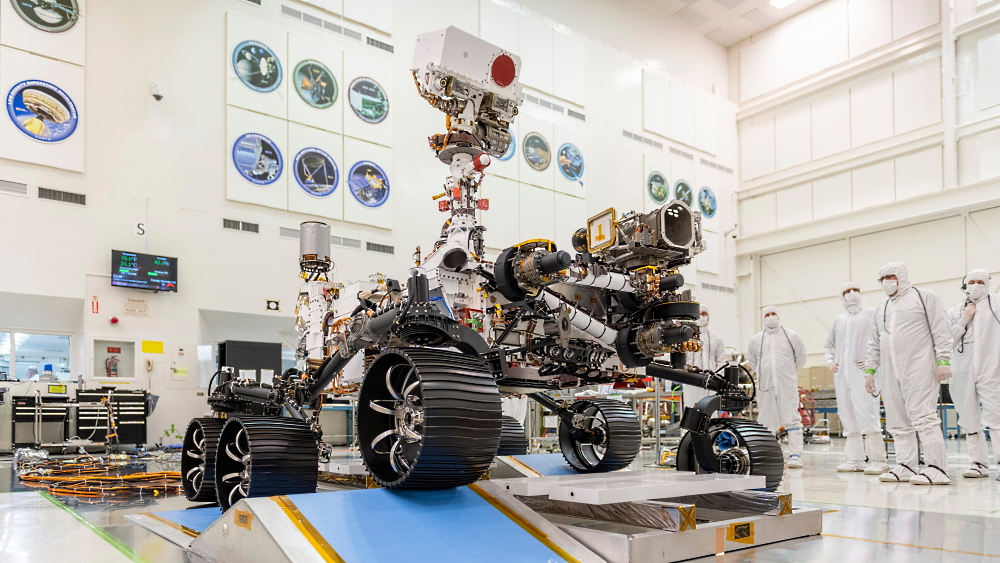
Rover Perseverance, Photo by NASA
The launch of NASA's Mars 2020 mission with the Perseverance rover has already been postponed three times. Initially, the start was planned for July 17th. However, due to the failure of the crane controller that installs the side solid-fuel boosters on the launch vehicle, the launch had to be postponed to 20 July. Then there was the problem of contamination of ground equipment at the refueling station (the fuel used in the flight stage and lander is very poisonous), which is why the new date was July 22. And three weeks ago a problem arose again on the launch vehicle, now during the "wet" (that is, with the rocket refueling) rehearsals, the liquid oxygen line sensor showed abnormal data. The start had to be postponed to July 30. At the same time, it is known that the start window is open until August 15, and it is not clear whether any tricks are possible to extend it.If the rover fails to ship to Mars in 2020, it would cost $ 500 million to wait for the next launch window in 26 months. This was the main reason that the work on the preparation of the mission went with the second priority immediately after the manned flight of Crew Dragon, despite all the coronavirus difficulties.

, NASA
Basically, Perseverance is Curiosity with bugs fixed (no more holes in the wheels) and new scientific equipment. For the first time, the rover will be accompanied by a small helicopter called Ingenuity, which will be able to stay in the air for 2-3 minutes a day and fly up to 600 meters. Also for the first time, the rover will collect samples for onward delivery back to Earth in the 2030s by another vehicle. The number of cameras on the rover has grown to 23, and microphones have also been added. The new Mastcam-Z camera received the ability to zoom, X-ray fluorimetric and ultraviolet Raman spectrometers for mineralogical research and search for organic matter, as well as georadar were put on board. And questions of the production of rocket fuel on Mars will be tested by an experiment on the extraction of oxygen from atmospheric carbon dioxide.
The last, fourth device left the race on March 12, 2020. On that day, it was announced that the second part of the Russian-European mission "Exomars" was postponed to 2022 due to the difficulties caused by the coronavirus pandemic and the need to improve the equipment. It remains to be hoped that none of the two vehicles that have not yet launched will keep him company.